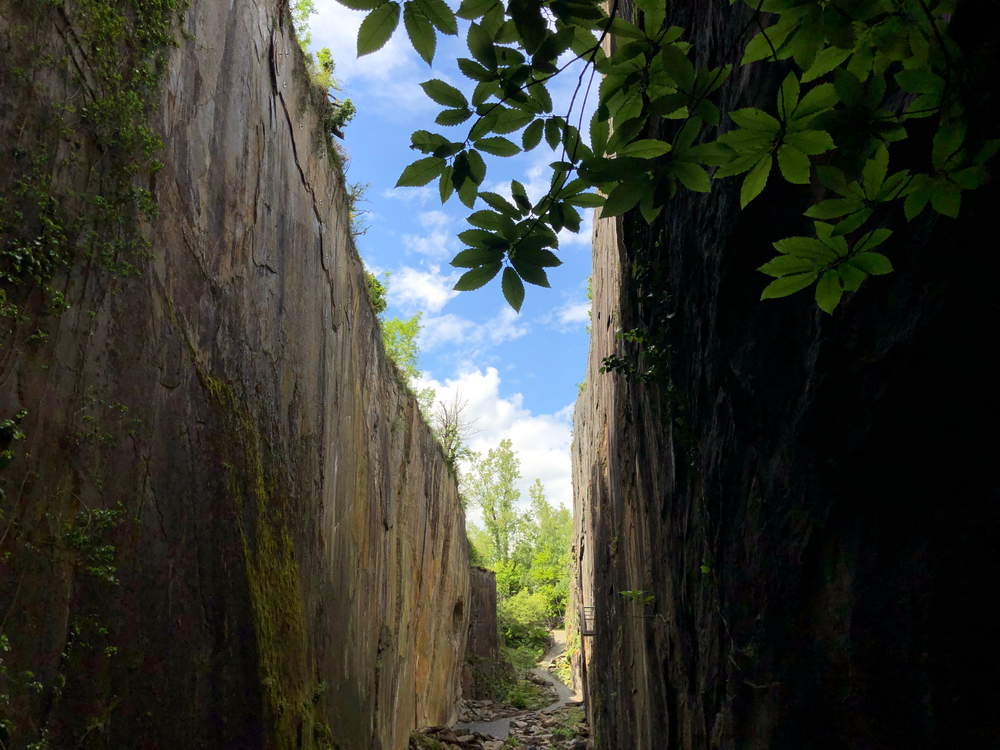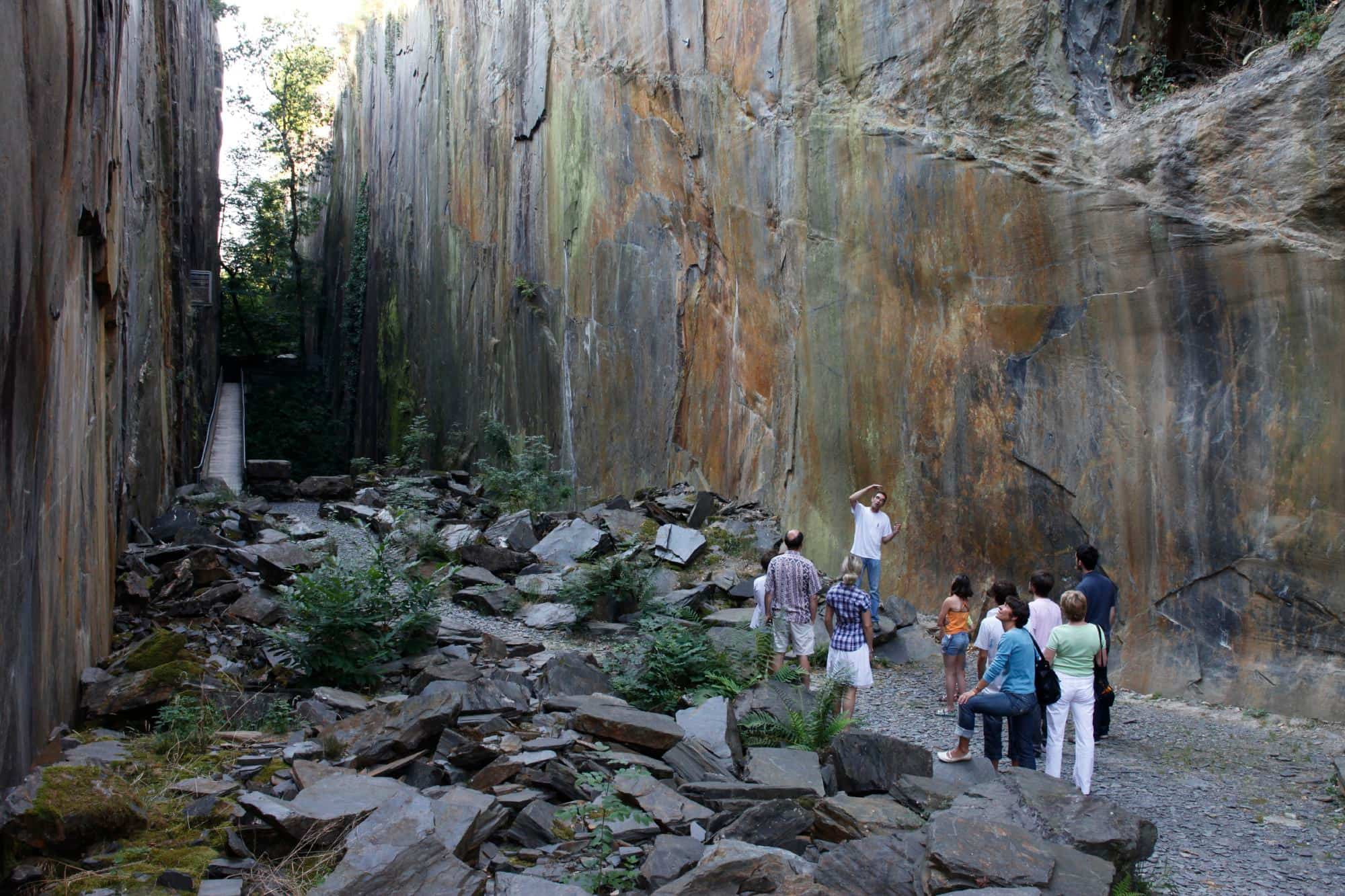

Recognized for its geological qualities, the Travassac slate makes it possible to build roofs more than hundred years old and continues to inspire today's architects and roofers. Reputed inalterable (in particular with the hail), flexible and impermeable, it thrones proudly on the church of the Sacred Heart of Rodez and still dresses the roofs of Limousin and Auvergne thanks to the revival of the activity, interrupted in the Seventies, by Jean-François Bugeat in 1989.
It is to him that we owe also, in 1997, the creation of the museum allowing the slate quarrymen to make discover the secrets of their trade to the visitors: documents, tools, film..., their history and that of this ancestral know-how are revealed in the heart of a majestic natural site. We discover in particular the rebillage and the cleavage allowing to transform the stone into slate and the beginnings of the exploitation of these 7 veins (2 km long!) in the 17th century.
The Travassac slate quarries are one of the last two slate quarries still in activity and the only one open to the public. Located in the commune of Donzenac, it allows you to admire the unmined rock slides - whose immensity makes you dizzy, some of them being 60m high and 300m long! - but also the slate already extracted, shaped and cut to cover the roofs of Corrèze, Limousin, Auvergne or Midi-Pyrénées.
Diving into the serviced and secured gallery of this site, which is listed in the regional inventory of geological heritage, thus offers a unique opportunity to see a natural place shaped by the hand of man for centuries while cultivating itself. So, are you ready for a walk as unusual as it is surprising?
Go to this site knowing that visits are only held from May to October.
A truly magnificent place that retraces the work of our ancestors.

Valerie from Comme des Français
----
Continue your discovery of historical know-how
Credit photo : ©Les Pans de Travassac / ©Calips